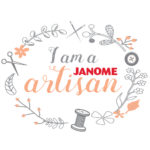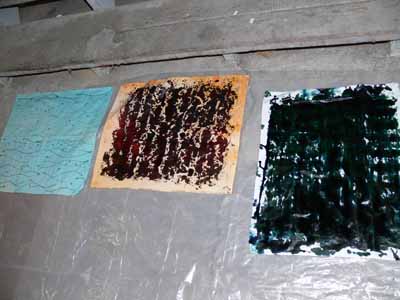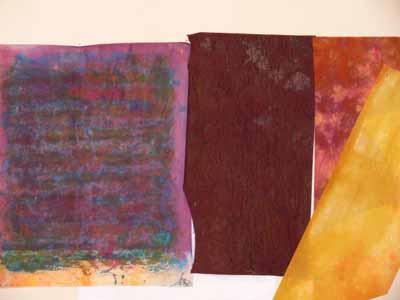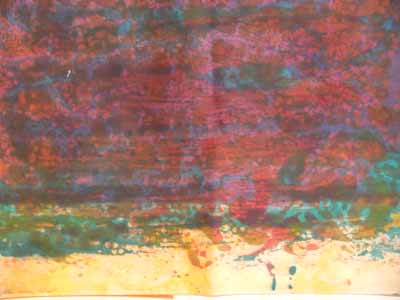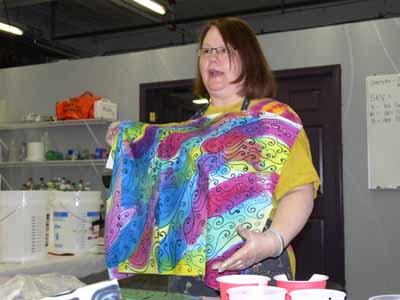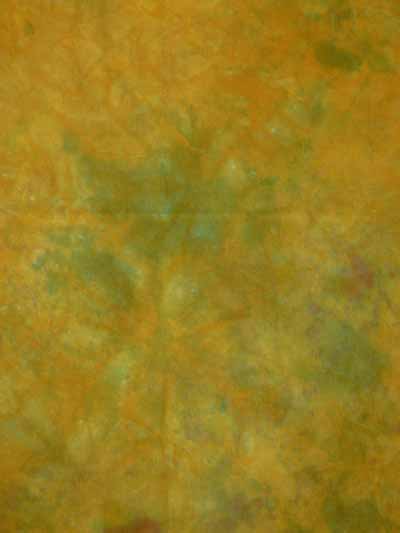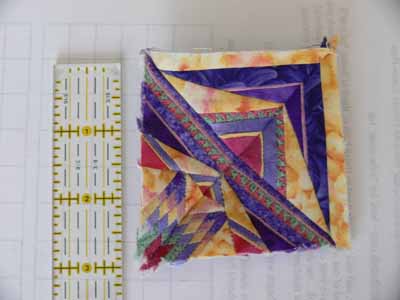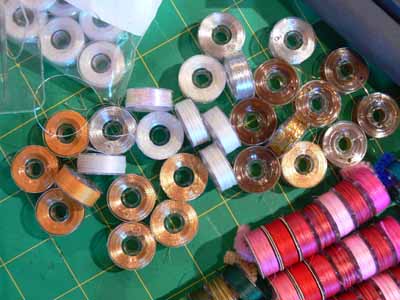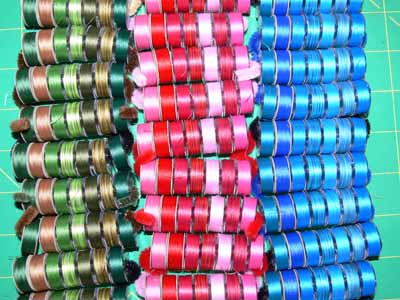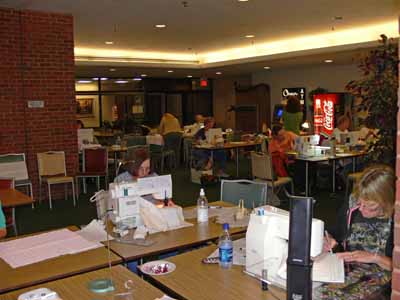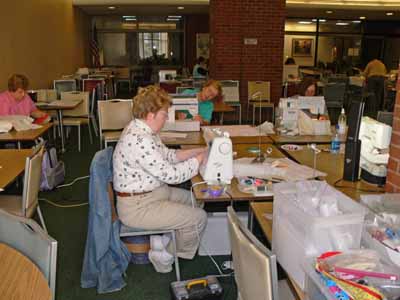BOOK REVIEWS:
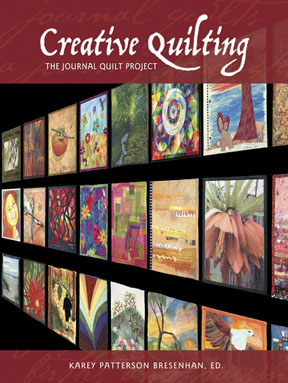
Karey Bresenhan’s book Creative Quilting: the Journal Quilt Project, (available here) came out about this time last year, and I intended to blog about it then, but life got away from me (what a surprise). Even if I didn’t have five (!!!) journals–small art quilts– in this book, I would recommend this 272-page tome heartily. I think this book will become a benchmark publication of where art quilting is in the earliest years of the 21st century. It is truly a remarkable, inspiring, and educational book that belongs on the shelf of every person who loves art quilts, whether they make art quilts or not.
So what is a journal quilt? The idea was to explore something each month–instead of writing in a paper journal, to document the month in cloth and thread and fiber and whatever, while also keeping a brief written narrative. The finished pieces were to be the size of a U.S. piece of copy paper: 8 1/2 x 11 inches, vertical orientation. I joined the QuiltArt list in late 2002 just as the first year’s journals were being sent in to hang in Houston. I signed up in early 2003 as soon as possible to participate the coming year, in part because I figured (happily I was wrong) it would be the only way I would ever have a quilt in Houston. For my January quilt, I wanted to involve my son, then in 3rd grade, since he was sometimes jealous of my quilting time. I asked and received the OK from both Joshua and Karey to use a piece of his second grade artwork as my very first journal:
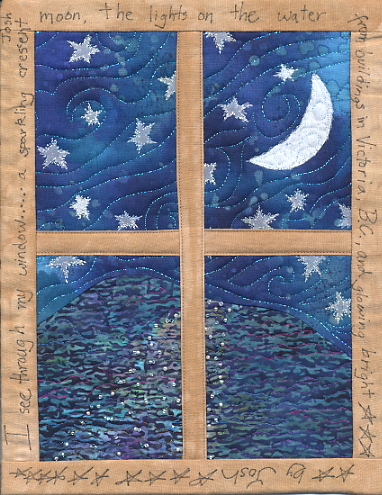
I cannot believe, now, how many firsts were in that quilt: first time using metallic thread, first time painting on fabric, first time fusing sheers and beading on a quilt! Now, those techniques are standard fodder for me. It is simply not possible to over-state how much doing the journal quilts has contributed to my development as an art quilter. This is the quilt and the project that launched a career! Best of all, it not only made it into the book, but is also included at thumbnail size in the introduction. You should have seen 13-year old Joshua’s eyes grow wide and fill with pride when I got the book and promptly opened it to show him HIS artwork (as interpreted by me)! That look is a gift from him to me that I will treasure forever.
The book is divided into seven chapters:
- Series
- Stories
- Flowers, Plants and Trees
- Animals and Insects
- L andscapes and Special Places
- Faces and Figures
- Abstract
Some of the most amazing works are those where the artist worked in a series in a given year’s journals. Maria Elkins and Rachelly Roggel’s are the ones that first spring to mind. I don’t think ANYone, in the six year run of this project has better utilized the potential for stretching and development through these quiltlets than Maria. By clicking on her name you can get to her gallery page, and from there view each year of her journals…prepared to be inspired and exhilarated!
The stories are equally amazing, from inspiring to heartbreaking. Some are humorous, like the woman undergoing chemo who left her hair on the sofa, literally (and used a tuft of fake fur on her pictorial version). Others are heartbreaking, documenting loss of loved ones and tragedies both personal and national.
The book is not a project book, but each entry shares the materials and techniques used by the artists. If it can be done to, with or on fabric, I think it was done in one of the journals! If you want to learn how to do a technique, you can go search out classes, technique books or magazines, such as Quilting Arts, that will teach you the how-tos. Creative Quilting is a book to savor and dip into at random, enjoying the journey.
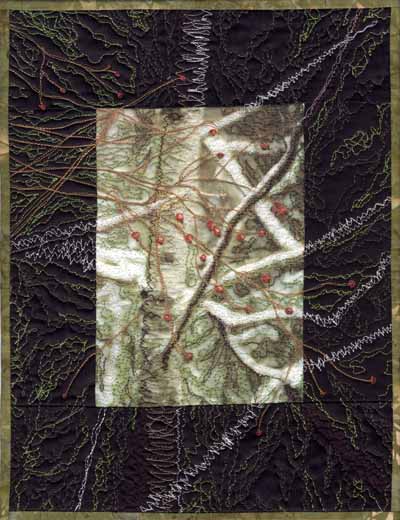
I was honored when Karey opened the section on Plants, Flowers and Trees with three of my journal quilts, including a full page (nearly life-sized) reproduction, above, of this quilt which features one of my photos printed onto cloth and quilted intensively. Also included are my January and February 2006 journals:
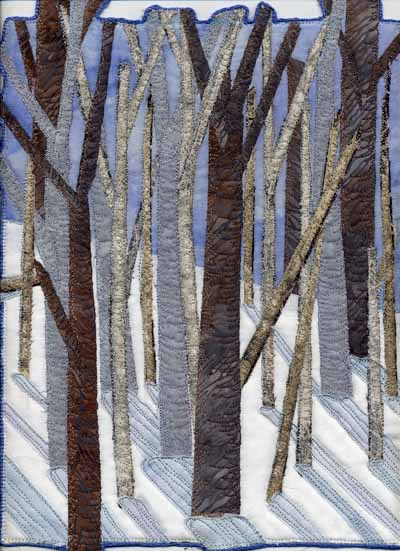
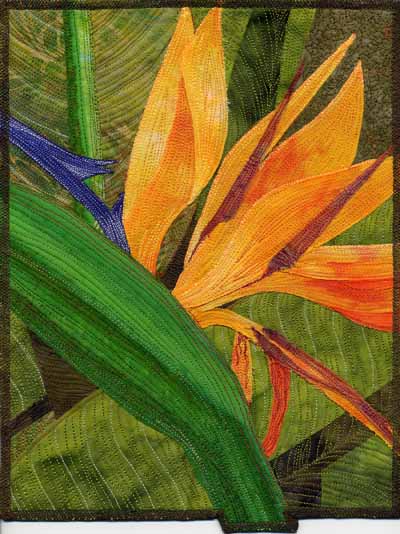
2007 is the final year of the Journal Quilt Project. This year, instead of making a different journal each month, Karey asked us to make a single piece 17″ wide by 22″ long (or four pieces of paper together) that used at least three techniques that were featured in journals included in the book. When the International Quilt Festival in Houston opens to the public on November 1, I will be able to share my journal for this year.
Even better, nearly ALL of the 400+ journal quilts in the book will be on display in Houston, in the order in which they appear in the book. I wish I could be there to see them, but will be content that I have had the unbelievable opportunity to learn and grow through this remarkable project.
